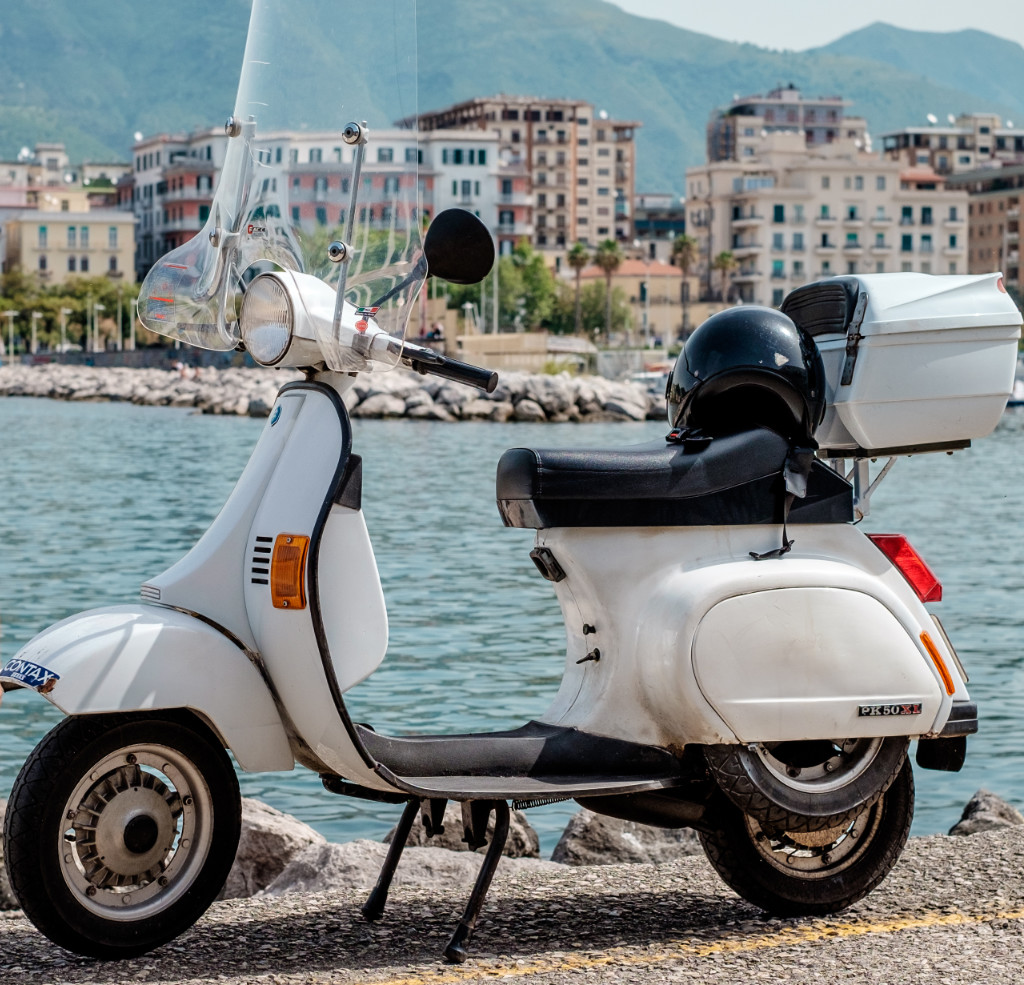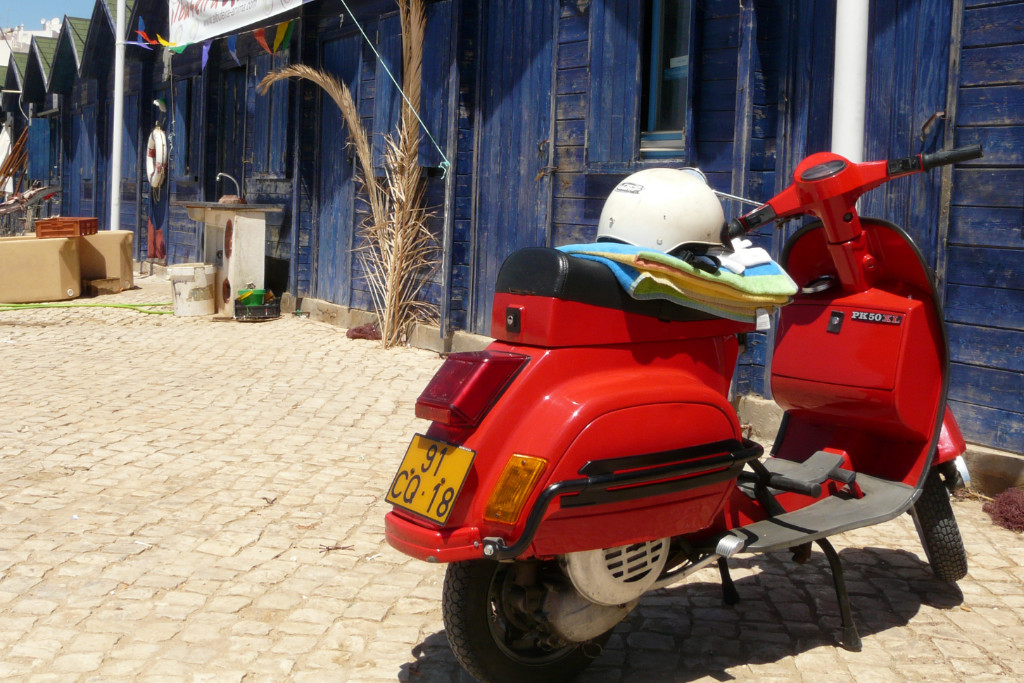Another scooter from Piaggio, the Vespa PK was built between 1983 and 1996. It was first presented in Milan in 1982 and was actually only intended to be a supplementary model to the Vespa PX and thus the successor to the Vespa 125 Primavera ET3 and the Vespa 50.
Technical features and characteristics
Compared to previous models, the Vespa PK is more angular and heavier, as well as having a larger body. Due to its size, it was more comfortable than previous models. The standard model in the Vespa PK range is the Vespa PK 50, with other equipment and engine variants being the Vespa PK 80, Vespa PK 100 and Vespa PK 125.
The PK 50, the PK80 and the PK 125 are equipped with brake lights, turn signals and a glove box. On the PK XL, the cascade, the steering head and the seat have also been modified for the facelift. In addition, the PK XL has side cheeks that are locked internally.
From 1984, the models were also built with hydraulic automatics. The further developed Plurimatic models have a V-belt automatic. This allows better transmission of the applied power to the wheel. In addition to the automatic models, there are also electric models. These have, as the name suggests, an electric starter.
Later, the PK 125 ETS was developed as a sporty Vespa PK. This model has both better brakes and a larger intake tract.
Model variants of the Vespa PK
- Vespa PK 50:
With a displacement of 49.79cc and a power output of 1.5 hp at 4500 rpm, the Vespa PK50 goes about 40km/h. - Vespa PK 80:
This model has a displacement of 79cc and a power output of 5.5hp at 6000rpm. Thus, this Vespa can reach a speed of up to 77km/h. - Vespa PK 125:
On the other hand, the Vespa PK125 has a displacement of 121.1cc and a power output of 6.8hp at 5600rpm. This makes a speed of 86km/h possible. - Vespa PK 125 ETS:
The sport variant PK 125 ETS goes up to 97km/h. This is realised by a displacement of 121.1cm³ and a power of 8.5 hp at 5600 rpm. - Vespa PK 50 XL:
This comes in two variants. Both have a displacement of 49.79cm³ and are 50km/h fast. The first variant has 1.5 hp at 4500 rpm, while the other produces 2.2 hp at 5000 rpm. The more advanced PK 50 XL PI only goes 45km/h with the same displacement and has an output of 2.5 hp at 6250 rpm. - Vespa PK 125 XL:
This model has the same displacement and power as the PK 125, but goes 90km/h.

Distribution and value of the Vespa PK
The variants of the Vespa PK are also very popular worldwide. However, the 80 and 100 cc engines, for example, have only been sold in selected countries. Nowadays, the various versions of the Vespa PK can be found on popular motorbike and car websites. Many workshops also specialise in this Vespa range and thus have sufficient spare parts in stock.
Source cover picture: Manuel Alende Maceira, Wikimedia Commons, CC BY 2.0



